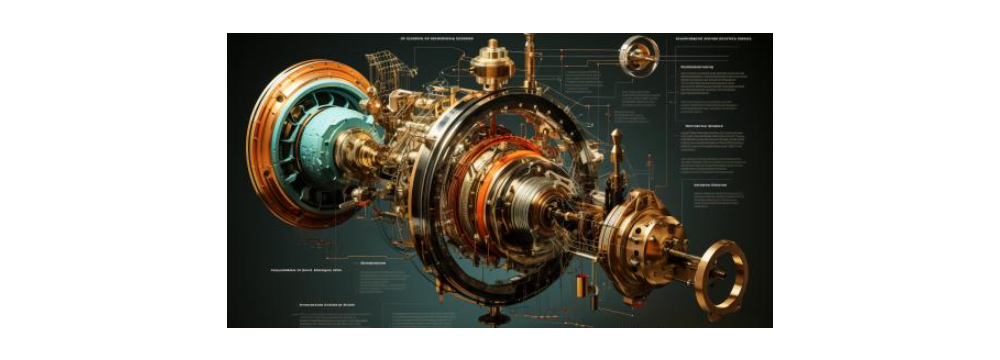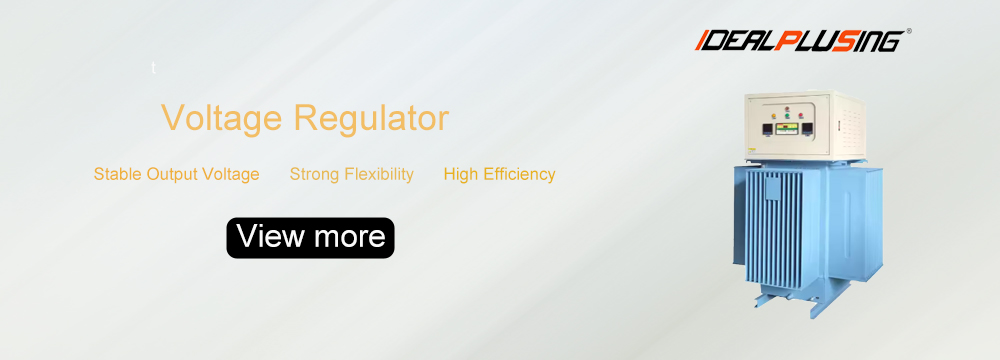In modern medical systems, the stable operation of equipment is directly related to the life safety of patients and the accuracy of diagnosis and treatment results. However, power problems such as grid voltage fluctuations, surge interference and even instantaneous power outages may have a fatal impact on precision medical equipment (such as MRI, ventilators, monitors, etc.).
As the "safety guard" of the medical power system, the voltage regulator can not only filter out power pollution and provide pure and stable voltage, but also resist voltage mutations in millisecond response, becoming an invisible lifeline to ensure the uninterrupted and reliable operation of medical equipment 365 days × 24 hours.
1. Working and application of voltage regulator (automatic voltage regulator)
Automatic voltage regulators can adjust the voltage of the power grid, generator, transformer or feeder. When the electrical load draws current from the power grid, generator or transformer, a voltage drop occurs in the transmission line or cable. The transmission medium has a certain resistance, and the IR voltage drop in the transmission line causes a lower voltage at the receiving end. The voltage drop in the line depends on the power factor of the load. Loads with lower power factor consume more current, resulting in more voltage drop.
It is critical to maintain the voltage according to the rated voltage of the electrical load. If the supply voltage is not within the rated voltage range, the performance of electrical equipment will deteriorate. A voltage regulator is a device that controls the output voltage and maintains it within set limits.
2. There are various methods available for regulating the voltage of AC and DC supply:
The voltage of feeders of equal length in a DC system is regulated by compound generators. However, if the line lengths are unequal, the voltage is regulated by feeder boosters. Step-up transformers, inductive voltage regulators, shunt capacitors, automatic voltage regulators (AVRs), etc. regulate the voltage of the AC supply. After understanding the necessity of a voltage regulator, we will discuss how it maintains the required voltage.
3. Working principle of voltage regulator:
The controller of the automatic voltage regulator compares the actual voltage with the set point and outputs an error signal that controls the power supply to the exciter. The output is taken from the generator output after being stepped down by a voltage transformer. The silicon controlled rectifier (SCR) controls the output voltage of the exciter,
The circuit diagram of the automatic voltage regulator is shown below

When the generated voltage is lower than the set point, the controller outputs an amplified error signal, which reduces the firing angle of the SCR, resulting in an increase in the exciter voltage. The increase in exciter voltage results in an increase in field current and field flux. As a result, the generator voltage also increases until it reaches the set point of the automatic voltage regulator. This occurs when the load on the generator increases.
If the generator is running at light or no load, its voltage may exceed the set point. To combat this, the controller outputs an amplified error signal, which increases the firing angle of the SCR, causing the exciter voltage to decrease. The reduction in exciter voltage results in a reduction in field current and field flux. The reduction in field flux, in turn, reduces the generator's output voltage.
To maintain a consistent voltage output, the AC generator's excitation system must adjust to sudden changes in load. This is where an automatic voltage regulator (AVR) comes in. The AVR controls the exciter field current and modifies the output voltage. However, it is important to note that during severe fluctuations, the AVR may not respond as quickly as needed. A fast-reacting regulator based on the overshoot principle is used to obtain a fast response. According to this principle, when the load increases, the excitation current also increases. However, before the voltage reaches the value corresponding to the increased excitation, the voltage regulator reduces the excitation to an appropriate value. This ensures that the voltage remains within the required range and prevents any damage to the system.
4. Application of Automatic Voltage Regulator:
It regulates the system voltage to bring the machine closer to stable operation,
When multiple AC generators are operated in parallel, they share the reactive load between them.
The automatic voltage regulator reduces the overvoltage caused by sudden load loss in the system,
In fault conditions, it enhances the excitation of the system to ensure maximum synchronous power is provided during fault clearing
5. Importance of Automatic Voltage Regulator for Medical Equipment
A voltage regulator, also known as an automatic voltage regulator (AVR) or fully automatic voltage regulator, stabilizes the main power supply voltage of the load. It provides protection against power supply problems such as voltage sags, brownouts, and surges. Automatic voltage regulator It is an electrical appliance designed to provide a constant voltage to the load at its output terminals regardless of changes in the input power supply voltage. It protects the equipment or machine from overvoltage, undervoltage, and other voltage surges.
There are a wide variety of automatic voltage regulators available in the market today. These can be single-phase or three-phase units, depending on the type of application and capacity required. Three-phase voltage regulators are available in two versions, balanced load models and unbalanced load models.

6. Types of voltage regulators:
6.1. Servo:
A servo voltage regulator provides a stable voltage by varying the winding ratio of the transformer according to a negative feedback circuit. It has a moving mechanism in the form of a servo motor and additional carbon brushes.
6.2. Magnetic induction:
Magnetic induction voltage regulators are ideal when a low-maintenance automatic voltage regulator that can operate reliably in harsh environments is required. Magnetic induction voltage regulators are sometimes confused with induction motors. The principle of a magnetic induction voltage regulator is to change the proximity between the primary and secondary windings. In this way, the size and direction of the magnetic flux coupled to the windings change. Depending on the relative position of the two windings, the output voltage can be increased or decreased to the limit.
6.3. Contactless:
Contactless voltage regulators, also known as contactless voltage regulators, are a differentiator from servo voltage regulators and rely mainly on the closure of the transformer taps with thyristors for voltage regulation. Contactless voltage regulators can be used in environments where voltage accuracy is required.
7. Advantages of voltage regulators:
· Very accurate output voltage regulation;
· A variety of KVA ratings, voltages and configurations are available:
· Easy to adapt to outdoor applications:
· High tolerance for system failures and overloads
· High tolerance for power factor and frequency deviations;
· Good line isolation;
· Relatively convenient;
· Voltage correction may not be fast enough for electronic loads.
8. Importance of voltage regulators in the medical field:
Almost all medical equipment needs to be driven by electricity. In addition to medical equipment related to the technology and performance of the machine itself, the normal supply of electricity is also crucial. The normal use of medical equipment is related to the patient's life, and a slight mistake can lead to irreversible results.
The stability and reliability of the power supply are related to the patient's lifeline, and advanced equipment also poses challenges to the power supply. During the use of medical equipment, problems such as failure to work under DC and AC, electrical failure, inability to start and output will occur. Alarm failures, leakage, burns, button failures caused by equipment also often occur. Therefore, in this case, a voltage stabilizer dedicated to medical equipment is generally used to maintain the stability of the output voltage. However, as long as it is a voltage stabilizer, it can be regarded as a voltage stabilizer dedicated to medical equipment, but the voltage stabilizer that meets the requirements of medical equipment is a high-quality voltage stabilizer among the voltage stabilizers.
Share our interesting knowledge and stories on social media














